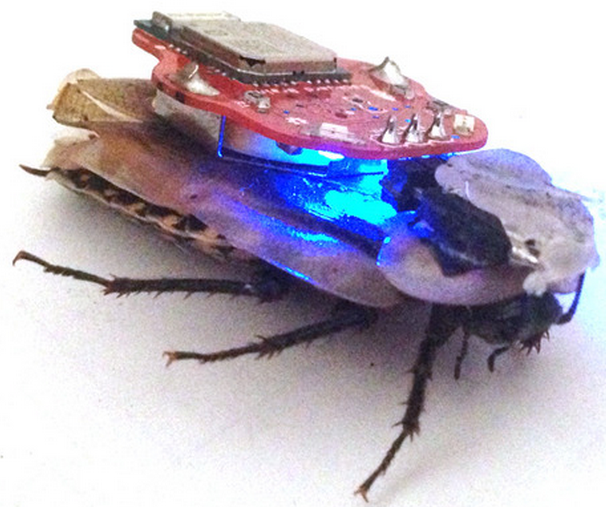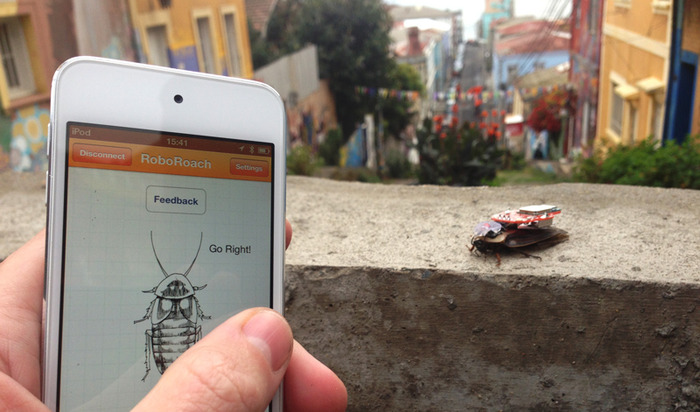The RoboRoach: control a living insect from your smartphone
June 11, 2013

RoboRoach
The RoboRoach, a Kickstarter project, is the “world’s first commercially available cyborg” — part cockroach and part machine.
The backpack communicates directly to the roach’s neurons in its antennas via small electrical pulses.
The cockroach undergoes a short surgery (under anesthesia) in which wires are placed inside the antenna. Once it recovers, a backpack is temporarily placed on its back.
When you send a command from your mobile phone, the backpack sends pulses to the antenna, which causes the neurons to fire, which causes the roach to think there is a wall on one side.

The result: the roach turns! Microstimulation is the same neurotechnology that is used to treat Parkinson’s Disease and is also used in cochlear implants.
“This product is not a toy, but a tool to learn about how our brains work. Using the RoboRoach, you will be able to discover a number of interesting things about nature.
Abstract from PLoS ONE (open-access) paper
Although people are generally interested in how the brain functions, neuroscience education for the public is hampered by a lack of low cost and engaging teaching materials. To address this, we developed an open-source tool, the SpikerBox, which is appropriate for use in middle/high school educational programs and by amateurs. This device can be used in easy experiments in which students insert sewing pins into the leg of a cockroach, or other invertebrate, to amplify and listen to the electrical activity of neurons. With the cockroach leg preparation, students can hear and see (using a smartphone oscilloscope app we have developed) the dramatic changes in activity caused by touching the mechanosensitive barbs. Students can also experiment with other manipulations such as temperature, drugs, and microstimulation that affect the neural activity. We include teaching guides and other resources in the supplemental materials. These hands-on lessons with the SpikerBox have proven to be effective in teaching basic neuroscience.